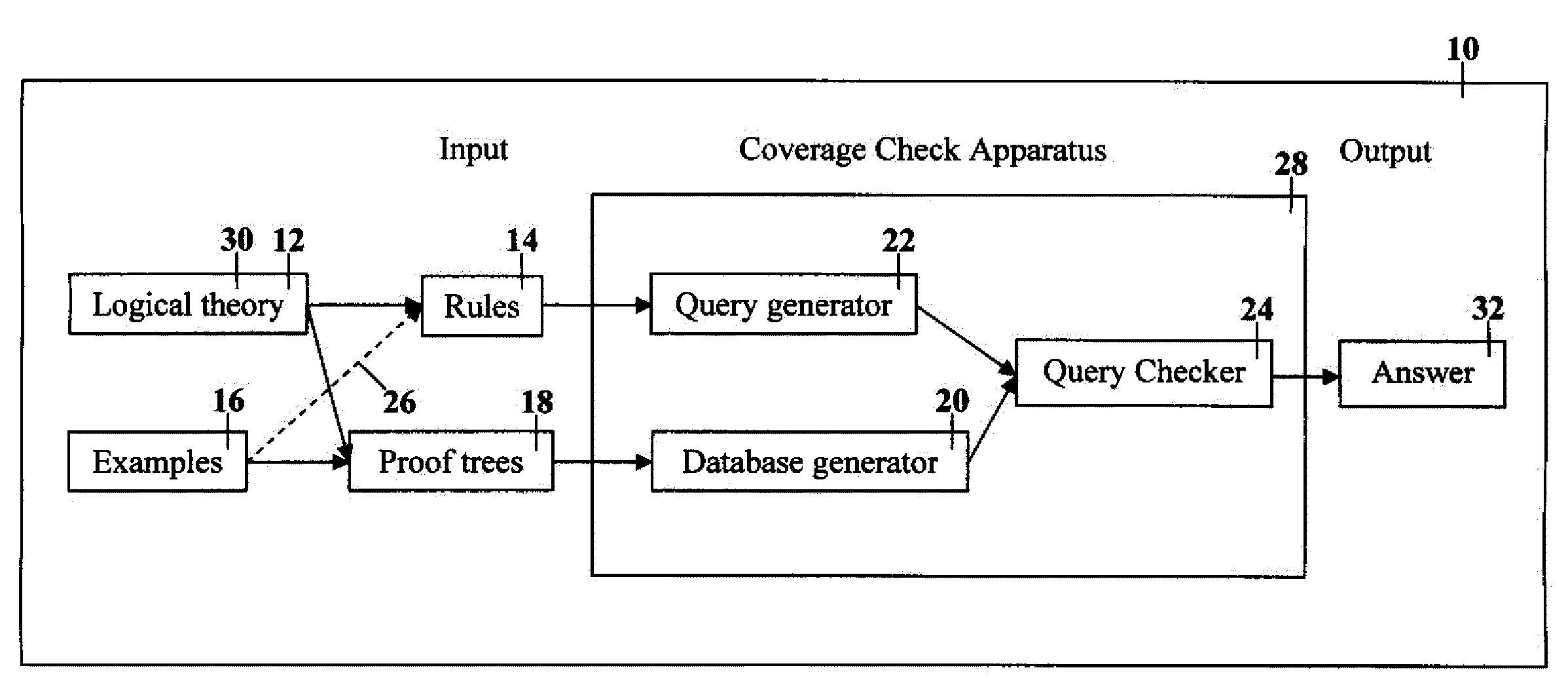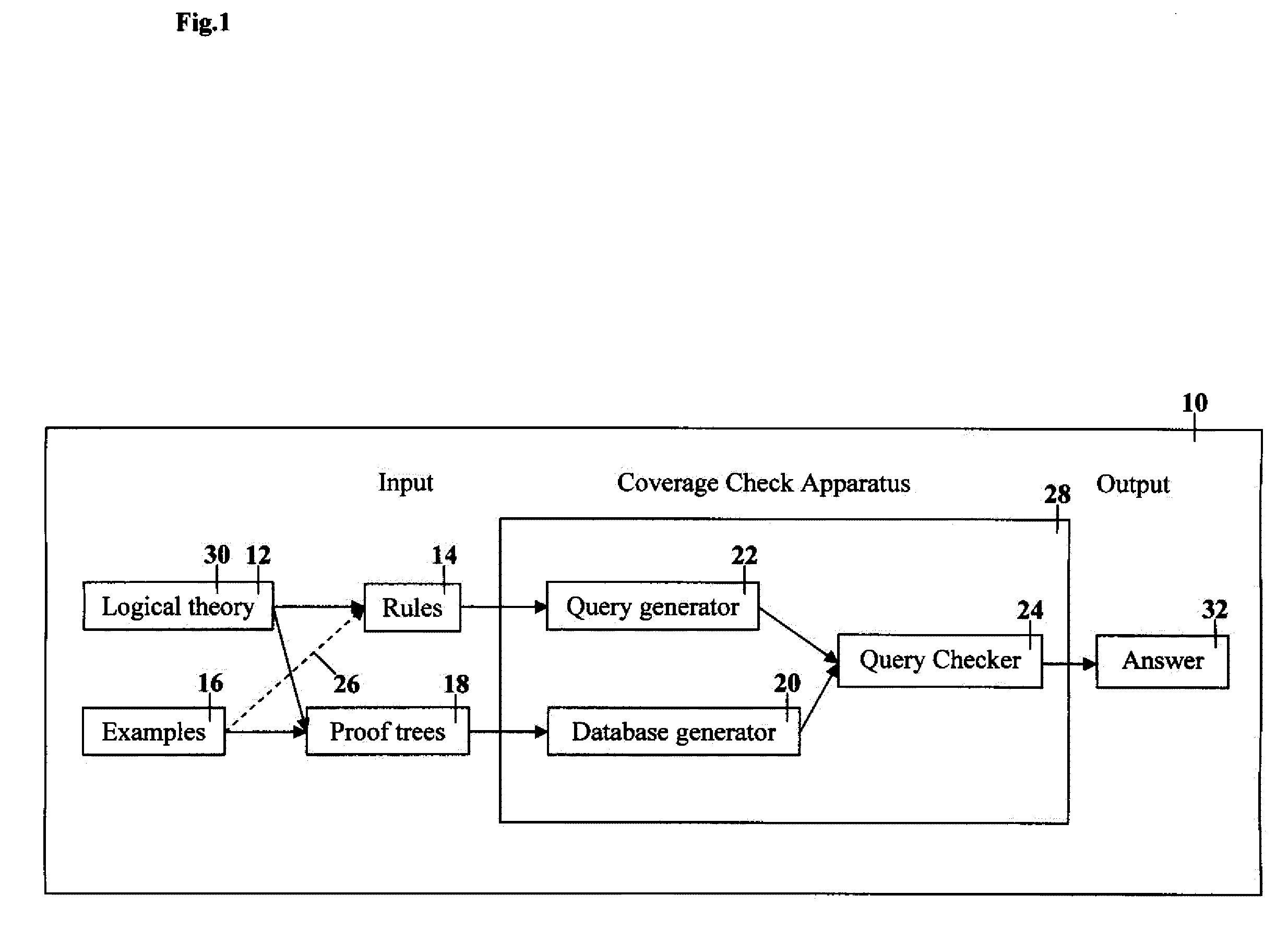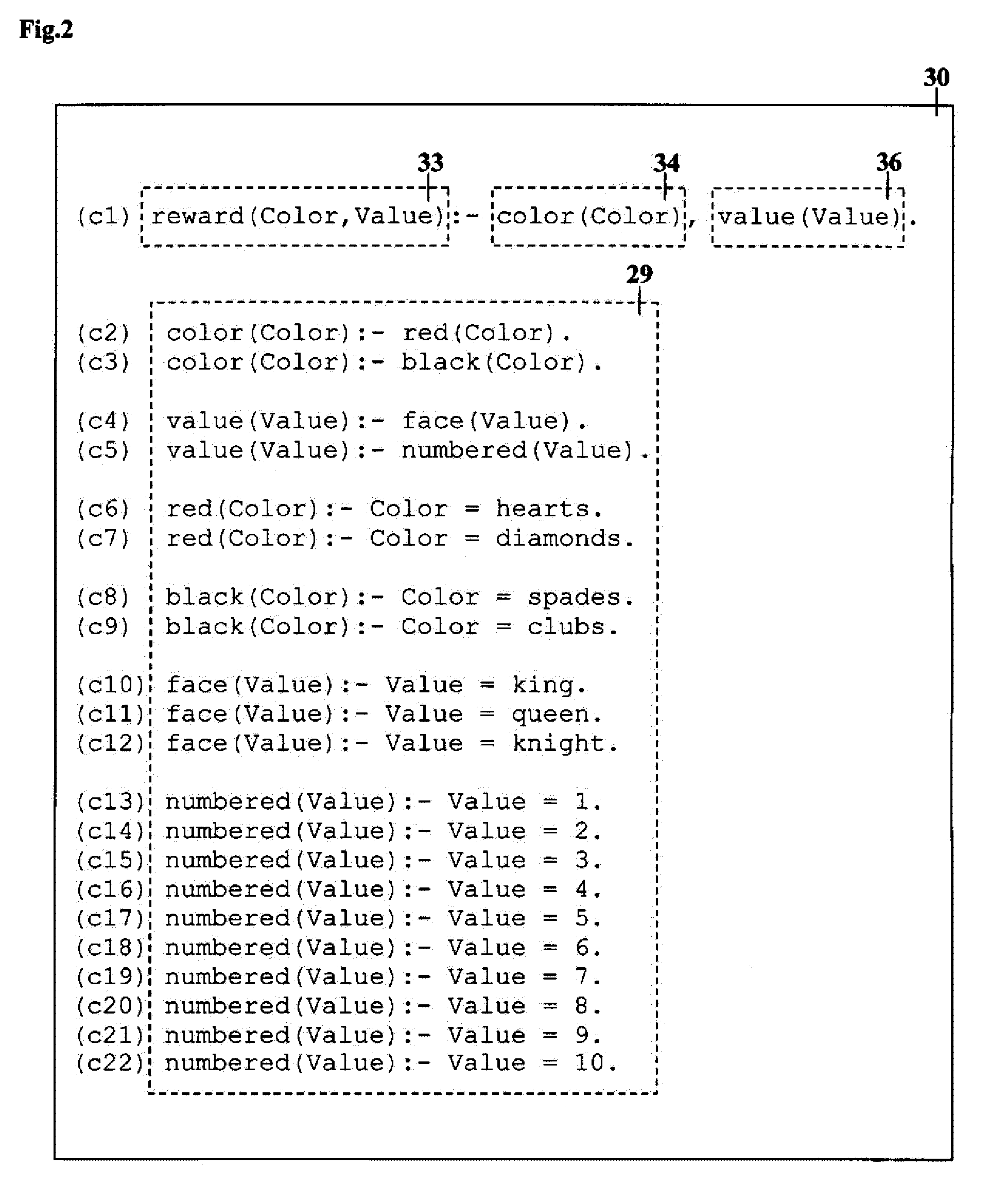Method for efficiently checking coverage of rules derived from a logical theory
a logical theory and efficient technology, applied in the field of learning systems, can solve problems such as cumbersome processes
- Summary
- Abstract
- Description
- Claims
- Application Information
AI Technical Summary
Problems solved by technology
Method used
Image
Examples
Embodiment Construction
[0025] With reference to FIGS. 1-15 and the description below, the method of the present invention is described with reference to particular embodiments of logical theories and database systems used in connection with a computer. The present invention, however, is not limited to any particular syntax for logical theories and types of database system, nor limited by the examples described herein. Therefore, the description of the embodiments that follows is for purposes of illustration and not as a limitation.
[0026] One important feature of the method of the present invention is that the database of pre-existing examples is investigated to determine if a rule covers a pre-existing example, that is associated with the same logical theory, so there is no need to recreate complicated proof trees for the examples and the rules. FIG. 1 provides an overview of a coverage check procedure 10 of the apparatus of the present invention. The procedure has a coverage check apparatus 28 that take...
PUM
 Login to View More
Login to View More Abstract
Description
Claims
Application Information
 Login to View More
Login to View More - R&D
- Intellectual Property
- Life Sciences
- Materials
- Tech Scout
- Unparalleled Data Quality
- Higher Quality Content
- 60% Fewer Hallucinations
Browse by: Latest US Patents, China's latest patents, Technical Efficacy Thesaurus, Application Domain, Technology Topic, Popular Technical Reports.
© 2025 PatSnap. All rights reserved.Legal|Privacy policy|Modern Slavery Act Transparency Statement|Sitemap|About US| Contact US: help@patsnap.com



